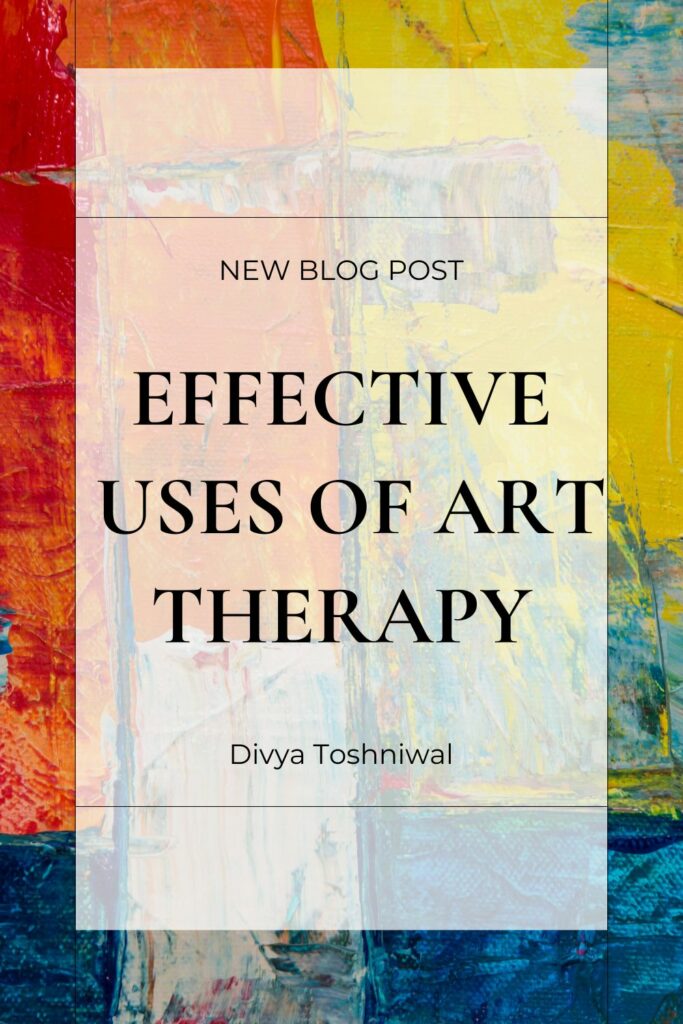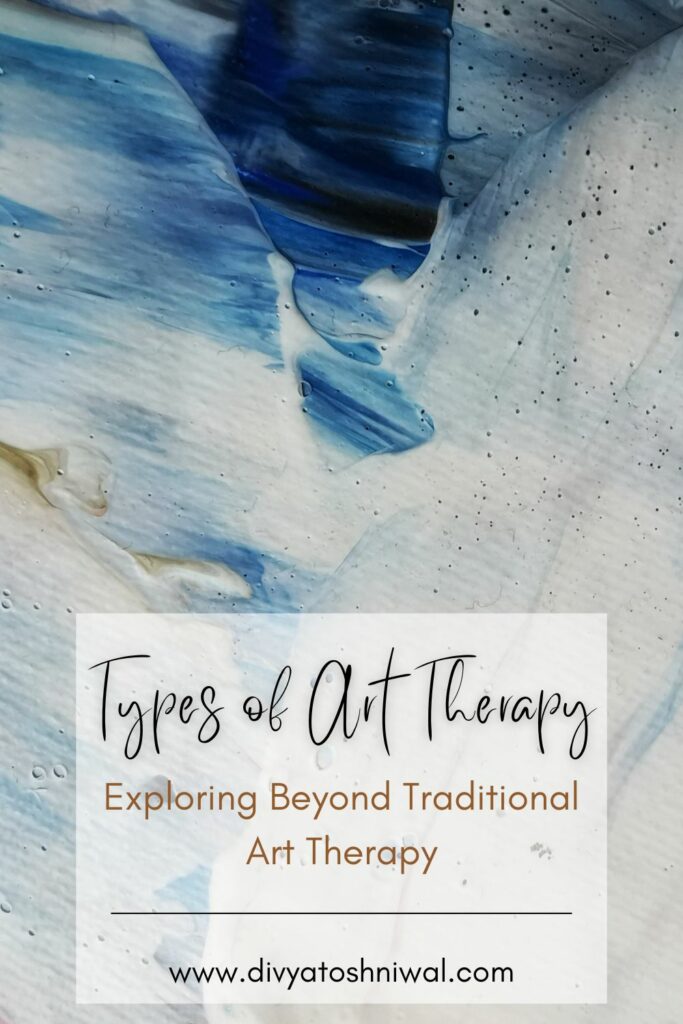Art has been an intrinsic part of us since pre-historic times, even when we did not speak and converse in words. The therapeutic aspects of art although have been rediscovered during the Second World War based on the concepts given by Carl Jung.
What is Art Therapy?
Our subconscious mind manifests itself through images and thus art therapy can be both a cathartic process and discovery of what is not evident. Art therapy is a form of psychotherapy that uses art as a means of expression and communication. 93% of what we communicate is expressed non-verbally while words are considered to be only 7% of the entire communication. Some non-verbal gestures are conscious while the others are subconscious. Hence there is a lot to explore in the non-verbal section of expression and communication.
Even when so many complex languages with so many words have been developed there are still times we say ‘ I don’t have words to express how I feel about this.’
Art therapy is used to help individuals explore their emotions, thoughts, and experiences in a nonverbal way, and can be used to treat a wide range of mental health conditions, such as anxiety, depression, and trauma.

Uses Of Art Therapy
A major question that arises here is when should you use art therapy. The short answer to it is anywhere and anytime. The helpful answer, however, would be when you can get some examples of where you can use art therapy.
Below are listed some uses of art therapy. The list is not exhaustive.
You can use it for expression of emotions.
Art therapy allows individuals to express their emotions in a nonverbal way, which can be especially helpful for those who have difficulty expressing themselves verbally. People can use symbols, colors and patterns in order to express the way they feel. Sometimes they may not even know the emotions they are going through but creating a piece of art may help them discover it.
You can use it for self-awareness
Any creative process, including art, brings you closer to yourself. They let your thoughts run wild and bring you out of inhibitions and into a journey of self-exploration. Art therapy may help you in gaining insights about your dreams, strengths, fears, and much more.
You can use it for stress-relief
Using art therapy as a creative and meditative process can help you relax and let go of any stress you are holding. Mandala art and finger paintings works very well for this.
Also read : 14 Tried and Tested Ways To Reduce Stress
You can use it for coping with trauma
For people who have gone through a traumatic experience, talking about it can send them further into a spiral. Talk therapies can be useful once they have caught hold of some emotions. In such situations art therapy acts as a medium for coping up with the trauma in a safe and controlled atmosphere. it gives you a space to let it all out.
You can use it to boost your self-esteem
Art therapy leaves you with a product, something that you have created. Hence, providing a feeling of creation and satisfaction within you . This impacts your subconscious mind in a way that boosts your self-esteem.
You can use it to improve communication
Art therapy can help individuals communicate their thoughts and feelings to others in a way that is less confrontational and more easily understood. It can be used for couples therapy and family therapy when communicating in words are increasing the issues.
There are a variety of techniques and materials used by art therapists . The different types of art therapies are listed below.

What are the Different Types of Art Therapy?
Art therapy is not limited to traditional art forms such as drawing, painting, and sculpture. It also include other aspects like collage making, sand art , thread works, crochet , knitting, shadow art, and much more.
There are a variety of techniques that are used by art therapists around the world and each has their own uses and benefits.
Traditional Art Therapy
This type of therapy involves the use of traditional art materials, such as paint, pencils, and clay, to create art. This style of therapy can be used for a number of purposes including self-awareness, emotional regulation, expression or to gain insight into your own needs and desires. Creating mandalas is also a part of this kind of therapy.
Expressive Art Therapy
This type of therapy incorporates multiple art forms, such as music, drama, and dance, to help individuals express themselves in a nonverbal way. Expressive art therapy can be used to address a wide range of mental health conditions, including anxiety, depression, and trauma.
Play Therapy
This type of therapy is usually used with children who are small. A variety of play materials and toys are used to help children express their thoughts and feelings in a safe and easier way since children may not be able to express themselves verbally.
Sand Tray Therapy
Based on the work of Dora Kalff and Carl Jung, Sand Tray Therapy is a form of art therapy that uses miniature figures and a sandbox to create symbolic representations of the individual’s inner world. It’s based on the assumption that the individual’s unconscious will be able to express itself through the manipulation of the sand and figures.
Group Art Therapy
Group art therapy involves the use of art-making as a means of communication within a group setting, which can be helpful for individuals who may benefit from the support and feedback of others. This can be effectively used to create team building experiences and resolving conflicts within groups as well.
Craft Therapy
Creating craft items like stuff from crochet , masks , home decors etc can also act as a therapeutic medium. Crochet can be really meditative and also the end product when created gives you a sense of accomplishment.
These are some examples of the most common types of art therapy, but the field is constantly evolving and new techniques are being developed and explored.
You can check this book out for detailed art therapy techniques :
